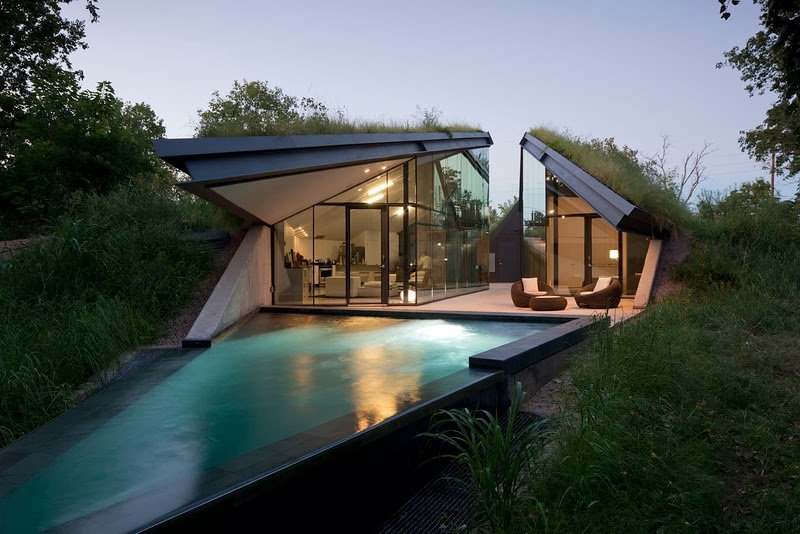#7502. Green Bunker: A Facade with Dynamic Geometry and Landscape Integration
The architectural object presented is a unique example of modern eco-design with elements of organic architecture. We see a building seamlessly integrated into the natural landscape, utilizing a green roof that literally merges with the surrounding vegetation.
The facade is characterized by dynamic, angular forms that create a dramatic contrast with the natural environment. A key feature is the abundant glazing – panoramic glass surfaces form a significant portion of the exterior walls, providing visual lightness to the structure and creating a continuous connection between interior and exterior. The sloping roof planes create triangular forms pointing in different directions, giving the building a futuristic appearance.
The central compositional element is an open pool that visually connects the two parts of the building and reflects light, adding another dimension to the space. The facade materials combine concrete elements with extensive glass surfaces, creating an interesting dialogue between solidity and transparency. Evening lighting penetrating through the glass elements emphasizes the geometry of the structure and creates a cozy atmosphere in the open space.
Particularly noteworthy is how the architect used the principle of embedding the structure into the ground, utilizing the landscape as an additional insulation and visual element. This approach not only improves the energy efficiency of the building but also minimizes its visual impact on the environment, creating a harmonious coexistence of architecture and nature.
